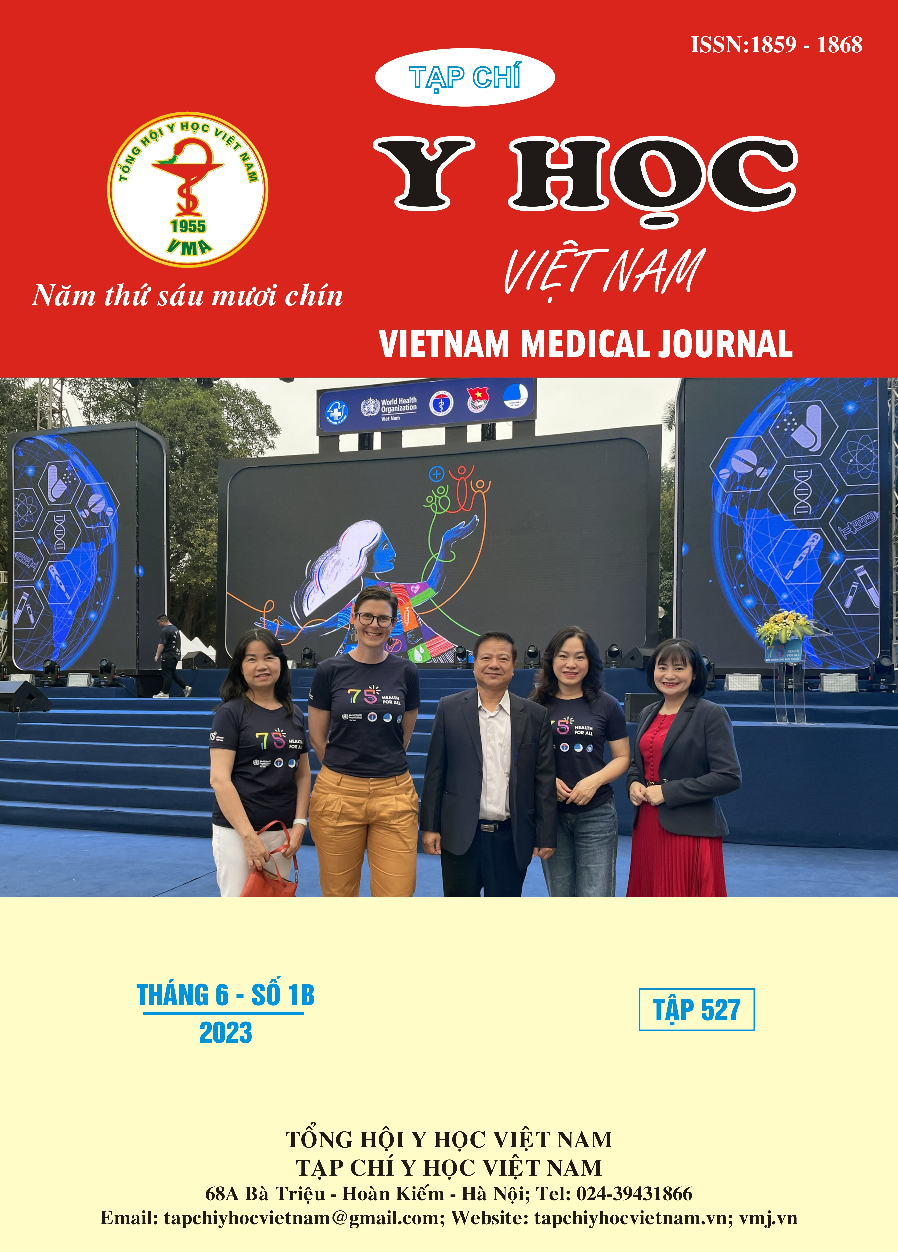SURVEY ON PLASMA CYSTATIN C CONCENTRATION AND GLOMERULAR FILTRATION RATE IN THE BETA THALASSEMIA PATIENTS
Main Article Content
Abstract
Objectives: Investigation of plasma cystatin C concentration and glomerular filtration rate (GFR) in adults with beta thalassemia. Methods: A cross-sectional descriptive study of 171 subjects including 114 adults with beta thalassemia, 57 healthy subjects as controls. Plasma Cystatin C concentrations were quantified by ELISA method in all subjects. The group of patients was calculated glomerular filtration rate based on Cystatin C and plasma creatinine according to the CKD-EPI formula. Results: Plasma Cystatin C concentration in the patient group was 1.08 (0.83 - 1.5) mg/l, higher than the control group 0.76 (0.66-0.92) mg/l, p< 0.001. The rate of increase of Cystatin C concentration in the patients group was 37.7%. In the group of patients, the glomerular filtration rate (GFR) calculated according to Cystatin C was 73.13 ± 33.61 ml/min/1.73 m2, lower than calculated according to creatinine was 118.55 ± 21.37 ml/min/1.73 m2 (p< 0.001). There were 39.5% patients with GFR < 60 ml/min/1.73 m2 when calculated according to Cystatin C, while only 0.9% calculated according to creatinine. There is a relationship between the concentration of Cystatin C, GFR with urine osmolality and urinary albumin/creatinine ratio, p<0.05; however, did not find a significant relationship with the severity of the disease, p > 0.05. Conclucsion: Elevated plasma cystatin C is a common manifestation and is associated with decreased urine osmolality and urinary albumin/creatinine ratio in beta thalassemia patients
Article Details
Keywords
Beta thalassemia, glomerular filtration rate, plasma Cystatin C, urine osmolality.
References
2. Musallam KM, Taher AT. (2012). Mechanisms of Renal Disease in β-Thalassemia. JASN, 23(8):1299-1302.
3. KDIGO (2013). KDIGO 2012 Clinical Practice Guideline for the Evaluation and Management of Chronic Kidney Disease. Kidney International Supplements 3: 5-6.
4. Ali BA, Mahmoud AM. (2014). Frequency of glomerular dysfunction in children with Beta thalassaemia major. Sultan Qaboos Univ Med J. 14(1): e88–94.
5. Annayev A, Karakaş Z, Karaman S, et al. (2018). Glomerular and Tubular Functions in Children and Adults with Transfusion-Dependent Thalassemia. Turk J Haematol. 35(1):66-70.
6. Tanaka A, Suemaru K, Araki H. (2007). A new approach for evaluating renal function and its practical application. J Pharmacol Sci. 105:1–5.
7. Murty MSN, Sharma UK, Pandey VB, et al. (2013). Serum cystatin C as a marker of renal function in detection of early acute kidney injury. Indian J Nephrol. 23(3): 180-183.
8. Sadeghi MV, Mirghorbani M, Akbari R. (2021). β-Thalassemia minor & renal tubular dysfunction: is there any association? BMC Nephrol. 22: 404.


